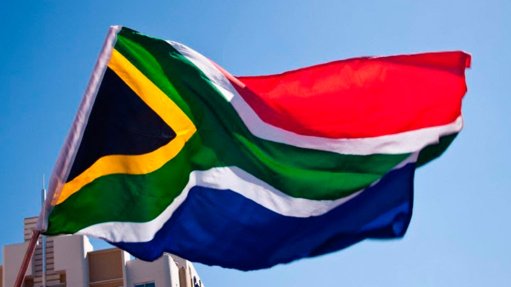Acclimatising physical infrastructure to extreme weather events
Climate change and extreme weather patterns are already a factor in infrastructure and are shaping future models of the design, placement, building and upgrading of infrastructure.
The weather phenomena that are starting to have the biggest impacts are extreme heat, flash floods, sea-level rise, cyclones, wildfires and tornadoes. We should add other natural disasters, such as earthquakes.
Extreme weather events are now being studied by both amateur and professional scientists trying to link on-ground information with macro-meteorological models. Over time, these models will increasingly become more and more accurate in terms of granularity, prediction of the severity of extreme weather and long-term forecasts.
The impacts of extreme weather events are being felt in ever-widening geographic areas because of their intensity and scale. Since new areas may be prone to more frequent flooding – if you consider the impacts of Cyclone Idai on Mozambique and Zimbabwe as cases in point – old models and assumptions under which infrastructure was first built have to change.
This is exactly what US telecoms giant AT&T discovered when it relied on past local knowledge and scientific studies to plan its existing stock of telecoms infrastructure. Extreme weather has forced it to develop a new infrastructure paradigm to protect its assets.
Shifts in weather patterns have forced AT&T to develop new and better tools that take into account two things: a measure of the resilience of the existing infrastructure and its forecasting ability for extreme weather patterns way into the future – 20 to 30 years.
Some of the measures that AT&T has had to take to make its infrastructure more resilient include elevating cell masts above the flood plain and locating copper cable underground in some areas. In 2016, AT&T spent almost $1-billion on addressing climate disasters.
Climate resilience is a new game for AT&T. In the US, despite all the anticlimate rhetoric of the Trump administration, utility companies that rely on fixed infrastructure – such as power utilities – are being forced to rethink their infrastructure strategies and consider factors such as wind, floods, sea-level rise, heat and fires in their infrastructure plans.
Building infrastructure is capital intensive and long term. Since infrastructure is also long lasting, the economic value and return of such infrastructure have to be secure over a long period. What is true for telecoms is also true for power utilities. The power sector is, thus, also starting to invest in infrastructure upgrades and forecasting. Many infrastructure companies that are listed will increasingly be under pressure to take climate risks more seriously than they have done hitherto.
In the power infrastructure sector, the potential collapse of transmission lines and damage to ground-based connectivity as a result of fires and floods are important considerations. Three issues deserve particular attention: how to strengthen existing grid and generation infrastructure, how to ensure connectivity rapidly in a period of disaster, and ensuring that there is a completely different paradigm for electrical connectivity that is fragmented and connected at the same time.
By fragmented, I mean you can isolate a system so that some parts can still continue to function while other parts are being fixed, thus avoiding total system collapse. The fragmented model has to include fixed and mobile solutions as part of the package of solutions that draw on resilience and adaptation to extreme weather.
The African continent is already facing extreme weather patterns, and these have been exemplified by Cyclone Idai and Cyclone Kenneth. These two events were unprecedented in their intensity and scale – the winds speeds, moisture density and distance of landfall had not been experienced on the continent before.
Zimbabwe’s eastern flank was devastated and exports to Beira were stranded, owing to bridges collapsing and land being submerged in water when Cyclone Idai struck. If you like, water is now a common bridge between land and the sea, rather than physical infrastructure. South Africa also felt the effects of the cyclones – power cuts had to be implemented, owing to power lines being damaged, preventing them from transmitting electricity from the Cahora Bassa dam, in Mozambique.
Extreme weather affects poor people the most and can increase their vulnerability. The effects can be in the form of the degradation of existing assets, the destruction of livelihoods, the displacement of people, and the disruption of existing institutions and forms of social capital. For governments that lack a big tax base, the destruction of infrastructure increases dependence, amplifies the debt load and places a drag on economic growth.
An opportunity does exist, however, in that the dearth of various kinds of infrastructure enables Africa to beat a new path in infrastructure development that is much more climateproof and resilient, compared with similar infrastructure in developed economies. This is where the real opportunity lies. But this will require increased research and development, innovation and shifts in how climate finance is allocated and spent.
Another interesting development in infrastructure resilience is the greater attention being given to ecological infrastructure. Much of the natural infrastructure – such as wetlands and mangroves – can be an ideal defensive mechanism, especially for cities and power infrastructure located in coastal areas. Indeed, the largest share of power infrastructure is located along coastal areas and waterways. Of course, natural infrastructure is not a panacea, but it can serve as the first line of defence. South Africa is behind the curve, compared with the rest of the world, but some great work is already being done at some of our local authorities to deal with climate vulnerability currently and in the future.
Article Enquiry
Email Article
Save Article
Feedback
To advertise email advertising@creamermedia.co.za or click here
Comments
Press Office
Announcements
What's On
Subscribe to improve your user experience...
Option 1 (equivalent of R125 a month):
Receive a weekly copy of Creamer Media's Engineering News & Mining Weekly magazine
(print copy for those in South Africa and e-magazine for those outside of South Africa)
Receive daily email newsletters
Access to full search results
Access archive of magazine back copies
Access to Projects in Progress
Access to ONE Research Report of your choice in PDF format
Option 2 (equivalent of R375 a month):
All benefits from Option 1
PLUS
Access to Creamer Media's Research Channel Africa for ALL Research Reports, in PDF format, on various industrial and mining sectors
including Electricity; Water; Energy Transition; Hydrogen; Roads, Rail and Ports; Coal; Gold; Platinum; Battery Metals; etc.
Already a subscriber?
Forgotten your password?
Receive weekly copy of Creamer Media's Engineering News & Mining Weekly magazine (print copy for those in South Africa and e-magazine for those outside of South Africa)
➕
Recieve daily email newsletters
➕
Access to full search results
➕
Access archive of magazine back copies
➕
Access to Projects in Progress
➕
Access to ONE Research Report of your choice in PDF format
RESEARCH CHANNEL AFRICA
R4500 (equivalent of R375 a month)
SUBSCRIBEAll benefits from Option 1
➕
Access to Creamer Media's Research Channel Africa for ALL Research Reports on various industrial and mining sectors, in PDF format, including on:
Electricity
➕
Water
➕
Energy Transition
➕
Hydrogen
➕
Roads, Rail and Ports
➕
Coal
➕
Gold
➕
Platinum
➕
Battery Metals
➕
etc.
Receive all benefits from Option 1 or Option 2 delivered to numerous people at your company
➕
Multiple User names and Passwords for simultaneous log-ins
➕
Intranet integration access to all in your organisation


















